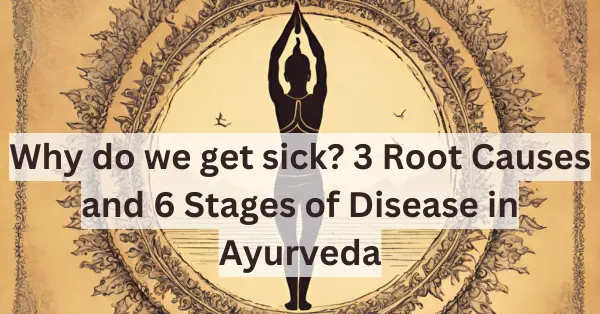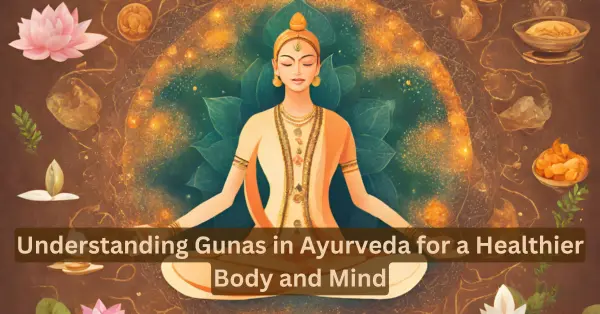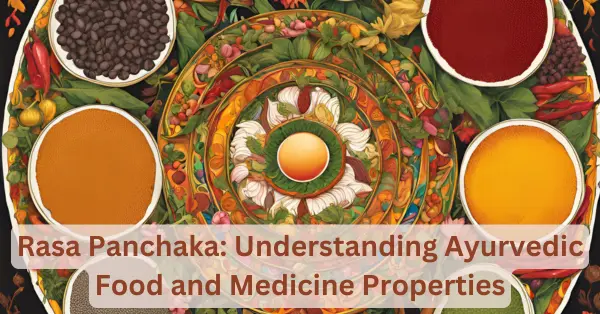This article will provide an overview of Abhyanga, Ayurveda’s ancient Massage Therapy.
What is Abhyanga?
Abhyangam or Abhyanga in Ayurveda is a Sanskrit term that means oil massage for health improvement. It is done from the scalp to the soles of the feet. It is not limited to physical, as it also brings balance and harmony to the mind and spirit of a person.
Oil is the central component of Abhyanga. Different oils have different effects on an individual’s body.
An Ayurveda masseur can perform the Abhyanga therapautically or you can also do it on your own. We will do self-abhyanga in the later part. You must consult an Ayurveda practitioner if you want Abhyanga for a specific disease.
Abhyanga is a Bahir Parimarjana chikitsa (external scrape therapy) and not merely a poorva karma or a therapy done for joy and recreation purposes. [1]
Abhyanga is the therapeutic intervention of Panchakarma in which the body is treated with simple or medicated oil on a particular body part according to need.[2]
Types of Abhyanga
1. Ekanga Abhyanga
Massaging specific parts of the body. Head, legs, Knees, back, etc.
2. Sarvanga Abhyanga
Full body massage is sarvanga abhyanga.
3. Pizhichil
It is a special form of Abhyanga where medicated warm oil is poured on the body of an individual and massaged simultaneously. The oil selection is according to the body type or specific disease of an individual.
Benefits of Abhyanga

Massage generally melts stress and tension away from the muscles. The benefits of Ayurvedic massage are as follows –
Nourishment of the body
It imparts muscle tone and vigour to the tissues of the body. It also lubricates the joints and hence easy movement of the joints. Abhyanga nourishes the skin tone, too.
Good for skin
Abhyanga softens and smoothes the skin. It reduces the wrinkles on the skin.
It also helps moisturize the skin, thereby helping to prevent the problem of dry skin and itching.
Detoxes the body
Massaging with warm oil helps to loosen the toxins from the soft tissues in the body. It later allows toxins to be removed by the elimination system of our body.
Calms the nerves
It soothes and calms the entire nervous system. The more often you do it, the greater the effects will be.
Enhances vision
Abhyanga tones the muscles of the eyes and head. As a result, it improves a person’s vision capabilities.
Deeper sleep
It’s great to perform abhyanga on your body if you have trouble sleeping at night. Massaging with warm oil at night, followed by a warm bath, is best for a good night’s sleep.
Good for hair
Shiro Abhyanga, or head massage in Ayurveda, is very beneficial for the hair. It makes the hair thick, soft, and glossy. It also helps reduce the problems of hair fall and greying hair.
Weight management
When done daily with proper oils, it helps to maintain a healthy body weight. All the benefits listed here eventually help with your weight.
Increases Stamina and Energy Levels
Increases the energy levels and the stamina of the body throughout the day. Because the massage boosts metabolism.
Hence, it ensures the proper functioning of the internal organs and energises the cells in the body.
Aids digestion
Strengthening the abdominal muscles and increasing blood circulation helps with digestion.
Helps in spasms
It tones up the pelvic floor, abdominal, and back muscles and helps to release muscle spasms.
Prevents Anemia
It increases the Red Blood Cells or RBCs and helps to prevent anaemia. Proper blood circulation improves oxygen supply to the bone marrow, where the RBCs are produced.
A relief in Arthritis
Abhyanga pacifies vata, pitta dosha. However, it stimulates the Kapha Dosha. Arthritis is a vata disease, and Vata oil massage will be of immense benefit to Arthritis patients
Helps With Thrombosis
Thrombosis happens when blood clots block the blood vessels. The rubbing and friction improve venous flow by dilating the superficial blood vessels. This, as a result, gives relief in Thrombosis.
Findings indicate that Abhyanga massage is promising in reducing subjective stress experience. It may be beneficial in lowering HR in all, and BP in prehypertensive subjects.[3]
How Abhyanga cures diseases
Ayurveda explains that herbal oils used in Abhyanga contain oil and water-soluble medicinal principles of a particular herb. These medicinal principles enter through the skin pores and become available for absorption at the end of the blood vessels.
These are then absorbed into the blood. Through the blood, these medicinal principles reach the target area and exhibit their medicinal actions to cure the disease.
Best Time for Abhyanga Oil Massage
Best time– Early morning after the bowel movement and before the bath.
If your body aches increase while working, you should massage in the morning. This way, your pain will be under control, and you can get through the day quite comfortably.
Second-best time– Massage can also be done in the evening. Evening time is a dominant time.
You can apply hot fomentation after the massage to prevent coldness and stiffness. The warmth will improve the absorption and assimilation of the oil.
Remember- You must massage one hour before or one hour after taking meals.
Abhyanga oil types
The oils in Ayurveda massage can be divided into vata, pitta, and kapha dosha oils according to Ayurveda.
Vata Dosha Abhyanga Oils
These oils pacify the vata or vata diseases.
1. Sesame oil
2. Avocado oil
3. Ashwagandha oil
4. Bala oil
5. Ghee
6. Maha Naryan oil
7. Kottum Chukadi oil
8. Almond oil
9. Bhringraja oil
Vata Dosha Abhyanga Oils in detail
Vata dosha in abhyanga is treated with wet, heavy, calming, and warm oils.
1. Sesame oil
Sesame oil is a popular base oil. It is a traditional oil for abhyanga for vata dosha.
It is good for promoting strength and healthy skin. When it’s mixed with other Ayurvedic herbs, it assumes the properties of the herbs without losing its own.
This oil alleviates the vata dosha without increasing the Kapha dosha.
To enhance the vata-pacifying qualities of sesame oil, one can blend it with herbs like ashwagandha, stavri, and bala.
This oil is perfect for the winter and fall seasons when Vata is most likely to become imbalanced.
2. Ashwaganda and Bala oil
These are good options for Vata dosha. These oils are known to promote strong and healthy muscles.
3. Maha Naryan oil
Ayurveda recommends this oil for abhyanga for Arthritis, Paralysis, and Muscular and Joint pain. This vata-pacifying oil ensures the comfortable movement of the joints.
4. Ghee
It is a good alternative to vata dosha. Ghee is deeply nourishing, hydrating, and especially suitable for dry skin. Ghee is clarified butter and not an oil, essentially.
5. Kottumchukadi oil
This oil is used to treat nervous system disorders. Disorders causing neuromuscular pain, sciatica, and spondylitis. It contains rejuvenating and anti-oxidant herbs like moringa, ginger, and tamarind.
Pitta Dosha Balancing oils.
1. Eladi oil
2. Brahmi oil
3. Sunflower oil
4. Manjistadi oil
5. Olive oil
6. Coconut oil
7. Castor oil
Pitta Dosha Abhyanga Oils in detail
The primary qualities of Pitta are oily, sharp, hot, and light. Traditionally, cooling oils are best for balancing Pitta dosha.
Castor oil is a great pacifier for both pitta as well as vata dosha. One can use it for fever, pain, and swelling.
Coconut oil also balances the pitta dosha. It is soothing to the body and the senses. It is nourishing for hair and teeth. When it’s digested, it takes a long time to absorb.
However, when it’s used on the skin, it has a powerful ability to nourish the skin and treat various skin conditions.
Kapha Dosha balancing oils
Stimulating oils are good for balancing Kapha Dosha.
1. Corn oil
2. Canola oil
3. Lavana oil
4. Sahacharadi oil
5. Karpoordi oil
6. Marichadi oil
7. Flaxseed oil
8. Mustard oil
Mustard oil has hot potency and is penetrating in nature. Easily digestible. It is used in hammeroids, ulcers, worms, and itching.
This oil has Vata and Kapha soothing properties and is usually used on higher-weight individuals.
It aggravates Pitta Dosha. Pitta people must not use mustard oil.
Tridosha oils
When tri doshas are predominated, Ayurveda recommends-
1. Narayan oil
2. Maha Narayana oil
3. Dhanwantaram oil
Essential oils in Abhyanga
To get additional benefits, we add essential oils and make Ayurvedic oil formulations more pleasant.
Essential Oils for Vata Dosha-
Basil, Black pepper, cinnamon, ginger, rosewood and sage oil.
Essential Oils for Pitta Dosha-
Sweet and calming oils go well with Pitta Dosha. Fennel, Jasmine, Lavender, and Sandalwood oil.
Essential Oils for Kapha Dosha-
One must prefer warming, drying, and stimulating aromas. Black pepper, cloves, cumin, uleletus, ginger, and lime.
Self-massage or Self-Abhyanga
You can massage your body daily on your own with love and patience. With self-massage, the benefits of abhyanga become available to you in the comforts of your own home.
If you follow the right Abhyanga technique, you can get equal benefits as you would get after a professional Abhyanga masseur massage.
How to Self-massage Abhyanga Technique
1. Sit down comfortably in a warm room.
2. Start applying oil to the crown of your head, and slowly massage your scalp in a circular motion for 1-2 minutes.
3. Then massage your face in a circular motion for 1-2 minutes. Massage your forehead, cheeks, jaw, and temples.
4. Apply oil to your earlobes. Take some oil and massage the front and back of your neck.
5. Massage shoulders in a circular motion.
6. Take some oil and massage your limbs (arms and legs).
7. Use long strokes on the limbs and circular strokes on the joints (elbows and knees).
8. You should massage in the direction of the limbs’ hair i.e. the upper part of the hands and legs to down.
9. Massage chest and abdomen in a circular motion. Knees are weight-bearing joints; take care of them by massaging them for some time.
10. Finish your massage by massaging your feet.
11. Sit with the oil for 5-15 minutes if possible, so the oil can be absorbed and it can penetrate the deeper layers of the body.
12. Take a bath.
13. Use a heavy towel to wipe it off after.
Choosing the Right Oil for Abhyanga Self-Massage
You must consider three factors: Prakriti (your body type), Vikriti (Your imbalanced dosha), and the Season to choose the right oil for yourself.
1. Prakriti
Your dosha is predominant. For example, A person is healthy and has pitta prakriti, and the weather is hot and humid. The best oils for massage for this person are pitta pacifying oils.
2. Vikriti (Imbalanced dosha)
On such occasions, use the imbalanced dosha’s pacifying oils.
3. Season
Autumn- Early winter = Vata season
Late winter- Spring = Kapha season
Summer = Piita season
Select an oil that keeps your Doshas balanced in each season. In vata season, one must do Abhyanga with vata-pacifying oils.
Heating the oil

1. First, you must be able to select the right oil for yourself.
2. Oil should always be heated indirectly.
3. Take oil in a small bowl, and boil water slowly in a pan.
4. Switch off the flame of the boiling water after 2-3 minutes.
5. Another way, you can also heat the oil in a microwave for 2-3 minutes.
Abhyanga Caution
One must keep the following things in mind before Abhyanga
1. Pregnancy
You must consult an Ayurveda practitioner before Abhyanga in case you are pregnant.
2. Severe Fever or Illness
One must avoid Abhyanga in case of severe illness, acute fever, or severe Indigestion.
3. Skin conditions and wounds
A person should not perform abhyanga on open wounds. You must always consult an Ayurveda doctor for Abhyanga if you have a skin condition.
4. Any other medical condition
You must not consider Abhyanga yourself if you have a prevalent medical condition. It is always advised to consult an Ayurveda practitioner.
Conclusion
Abhyanga is a holistic practice that nourishes the body, mind, and spirit as well. You can do it yourself in the comforts of your home, or you can have it done therapeutically by a professional. It balances the body’s doshas and promotes harmony, relaxation, and overall health.
Reference
[1] ORIGINAL RESEARCH PAPER Ayurveda CONCEPTUAL AND APPLIED STUDY ON ABHYANGA (AYURVEDIC MASSAGE) KEY WORDS: . PARIPEX -INDIAN JOURNAL OF RESEARCH [Internet]. Available from: Go to Study.<Go to Citation>
[2] Samata, Shaila Borannavar, Ananta S. Desai. A conceptual study on the mode of action of Abhyanga. J Ayurveda Integr Med Sci [Internet]. 2021Sep.15 [cited 2025Jul.2];6(4):208 -215. Available from: Go to Study. <Go to Citation>
[3] Basler AJ. Pilot study investigating the effects of Ayurvedic Abhyanga massage on subjective stress experience. Journal of Alternative and Complementary Medicine (New York, NY) [Internet]. 2011 May 1;17(5):435–40. Available from: Go to Study. <Go to Citation>





